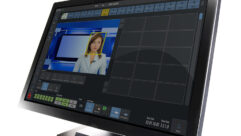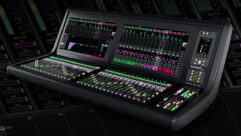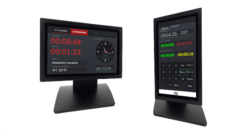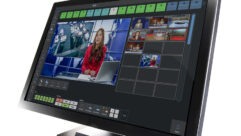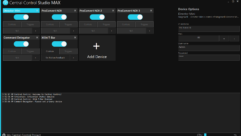BELLS & WHISTLES: Archway System & Show Control
Oct 1, 2001 12:00 PM,
BRIAN PHRANER sound engineer, DEMP
The Archway show control is robust enough to withstand a charging buffalo and simple enough to be operated by a 49’er. Careful design and control of Archway show-and-flow required a powerful, flexible show control system. At the same time, to satisfy the requirements for ease of operation, the system needed to be fully automated and capable of controlling all the various video sources and associated projectors, the many channels of audio sources and the digital sound system.
Fortunately, we were able to work through the design process knowing we would also be the ones to build the system. That allowed us to design a system with functional requirements driven by the individual exhibit concepts, and by team expectations of the production values. The decisions on equipment came after the production concepts and were organic enough to track the changes in design as they developed.
The show includes four major HD or digital video presentations, 16 different 2- or 4-channel ambient audio zones and 16 stereo headset audio zones. Alcorn McBride V-16s were used as the main show controllers and were programmed using WinScript. The program communicates via RS-232 to the projectors, digital video servers, digital audio servers, exhibit lighting controllers, digital signal processors and auxiliary show controllers. Additional control circuits to lighting and fire safety systems were done through contact closures.
The show control system was designed to start or stop the entire exhibit audio, video and special exhibit lighting with one button. Once this button is pushed, all the systems come alive, and the various individual show components begin cycling through their programmed tasks: Buffalo start stampeding, trains start travelling, and thunderstorms and wagon trains begin to rumble across the prairies.
The show control allows us to synchronize dramatic lighting cues with story events in the audio program. For instance, as a quad-stereo thunderstorm rolls across the Great Plains room, the sky darkens and flashes in sync with the storm. Sync audio from the video installations can be mixed into the ambient speakers, the personal headsets or both.
An example of the show’s complexity, and the precise orchestration required of individual components, is the Night Prairie area. This zone contains 4-channel ambient audio; Pony Express video with stereo audio and synchronized lighting cue; 6-channel railroad trestle audio effects and synchronized lighting effects; Indian-cave stories in stereo audio; and two IR headset audio zones, one for the Pony Express area and one for the railroad trestle area. The railroad IR headset circuit is fed directly to the emitters while the circuit for the Pony Express headsets are a stereo mix of the video soundtrack and headset audio sources. The recording of the old steam train that plays through the railroad trestle’s 6-channel sound system is strategically placed up on the trestle and sounds so real that visitors are almost convinced it’s passing overhead. The recording has tremendous spatial imaging as the train chugs across the trestle and the subwoofers rumble under the weight of the train. The headsets are acoustically transparent enough to allow all the ambient and FX sounds to come through and blend with the IR transmitted personal stories and comments in the headsets. Playback of all these elements is timed so that the visitor is hardly aware of the technology orchestrating his or her experience.
Timing is critical to the success of these complex scenes, so all components, including over 60 audio files, were organized as individual modules. This allowed us to restructure and adjust the show after installation.
During the Archway’s soft opening, DEMP observed visitor behavior in each area, including average stay and comprehension of the show. We studied the flow for pinch points. Then we began tweaking the audio playback, levels and EQ, video playback, lighting effects, and the overall timing, sequence and cycle duration of each event.
The Media Matrix and Alcorn Show Controllers essentially let us live-mix and edit the show on location, enabling us to optimize the balance between a dramatic show and audience flow.


